Senhor Montagu'š da Rolls
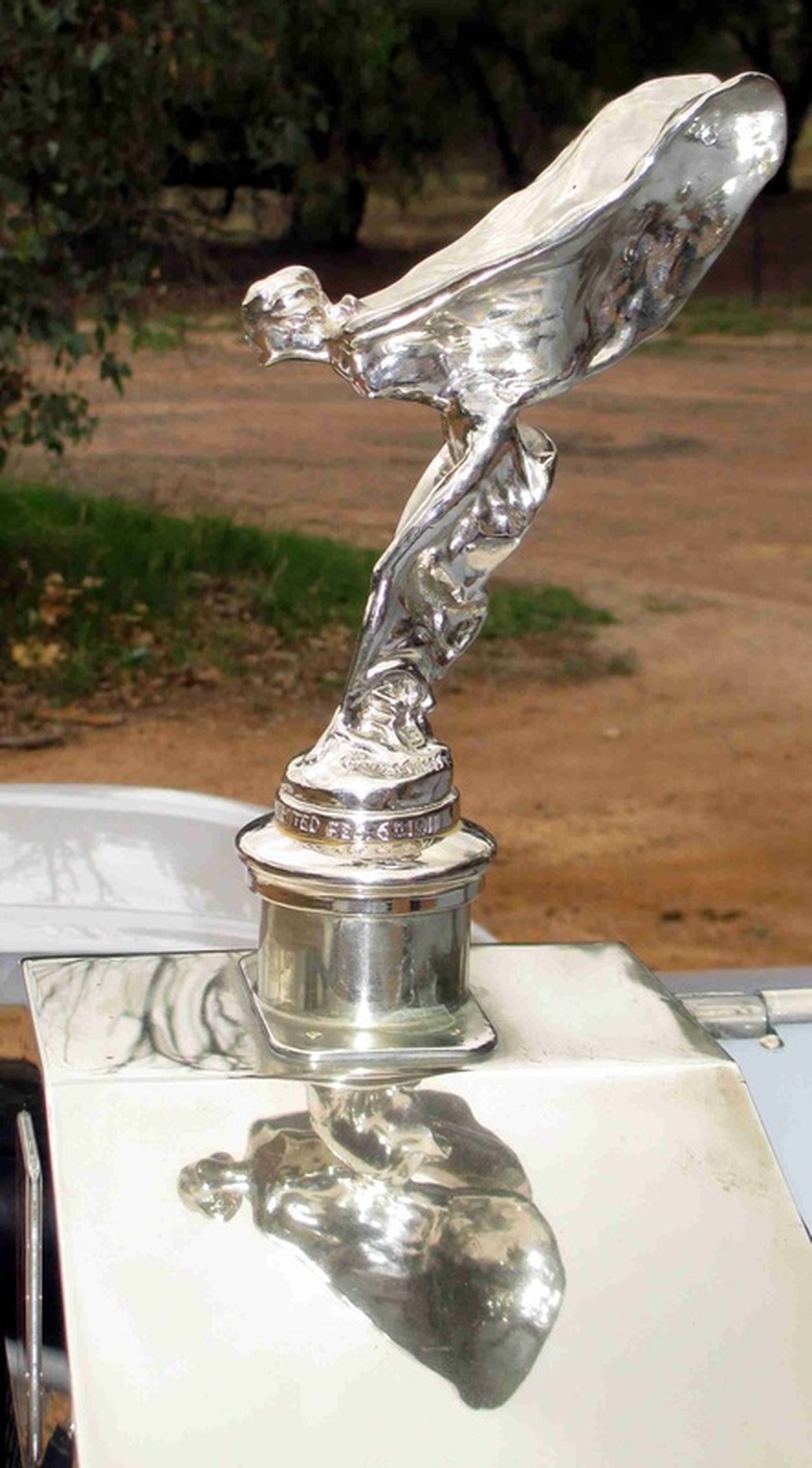
Silver Ghost Fast Facts:
Manufacturer Rolls-Royce Ltd; Also called 40/50; Production 1906–1926;
7874 made; Engine straight 6, twin spark plugs; 7036cc (429.4cid) from
1906–1910 and 7428cc (453.3cid) from 1910. Transmission 4-speed manual
(from 1913), 3-speed manual (1909–1913)
Wheelbase: 135.5 in (3,442 mm) until 1913; 143.5 in (3,645 mm)
1913–1923. 144 in (3,658 mm) and 150.5 in (3,823 mm) from 1923.
Predecessor: Rolls-Royce 30 hp; Successor Phantom I.
The $200 million Silver Ghost (courtesy Wikipedia)In 1907. Claude Johnson, Commercial and Managing Director of Rolls-Royce,
ordered a car to be used as a demonstrator by the company. With chassis no.
60551 and registered AX 201, it was the 12th 40/50 hp to be made,[2] and was
painted in aluminium paint with silver-plated fittings. The car was named the
"Silver Ghost" to emphasise its ghost-like quietness, and a plaque bearing this
name adorned the bulkhead. An open-top Roi-des-Belges body by coachbuilder
Barker was fitted, and the car readied for the Scottish reliability trials of
1907 and, immediately afterwards, another 15,000-mile (24,000 km) test which
included driving between London and Glasgow 27 times.
The aim was to raise public awareness of the new company and to show the
reliability and quietness of their new car. This was a risky idea: cars of this
time were notoriously unreliable, and roads of the day could be horrendous.
Nevertheless, the car set off on trials, and with press aboard, broke record
upon record. Even after 7,000 miles (11,000 km), the cost to service the car was
a negligible £2 2s 7d (£2.13).[2] The reputation of the 40/50, and Rolls-Royce,
was established.
AX201 was sold in 1908 to a private customer who used it for his annual
vacation to Italy and recovered by the company in 1948. Since then, it has been
used as a publicity car and travelled worldwide. In 1989, the car was restored
by SC Gordon Coachbuilders Luton, and P&A Wood, London, UK. It is now owned
by Bentley Motors.[2]
In 1984, the car was photographed in great detail whilst in storage in Luton
by precision model makers Franklin Mint. This die-cast model went on to become
one of their best-selling products.
The Silver Ghost is considered the most valuable car in the world; in 2005
its insured value was placed at US$35 million.[5] Today it is valued at US$200
million.[citation needed]
ordered a car to be used as a demonstrator by the company. With chassis no.
60551 and registered AX 201, it was the 12th 40/50 hp to be made,[2] and was
painted in aluminium paint with silver-plated fittings. The car was named the
"Silver Ghost" to emphasise its ghost-like quietness, and a plaque bearing this
name adorned the bulkhead. An open-top Roi-des-Belges body by coachbuilder
Barker was fitted, and the car readied for the Scottish reliability trials of
1907 and, immediately afterwards, another 15,000-mile (24,000 km) test which
included driving between London and Glasgow 27 times.
The aim was to raise public awareness of the new company and to show the
reliability and quietness of their new car. This was a risky idea: cars of this
time were notoriously unreliable, and roads of the day could be horrendous.
Nevertheless, the car set off on trials, and with press aboard, broke record
upon record. Even after 7,000 miles (11,000 km), the cost to service the car was
a negligible £2 2s 7d (£2.13).[2] The reputation of the 40/50, and Rolls-Royce,
was established.
AX201 was sold in 1908 to a private customer who used it for his annual
vacation to Italy and recovered by the company in 1948. Since then, it has been
used as a publicity car and travelled worldwide. In 1989, the car was restored
by SC Gordon Coachbuilders Luton, and P&A Wood, London, UK. It is now owned
by Bentley Motors.[2]
In 1984, the car was photographed in great detail whilst in storage in Luton
by precision model makers Franklin Mint. This die-cast model went on to become
one of their best-selling products.
The Silver Ghost is considered the most valuable car in the world; in 2005
its insured value was placed at US$35 million.[5] Today it is valued at US$200
million.[citation needed]
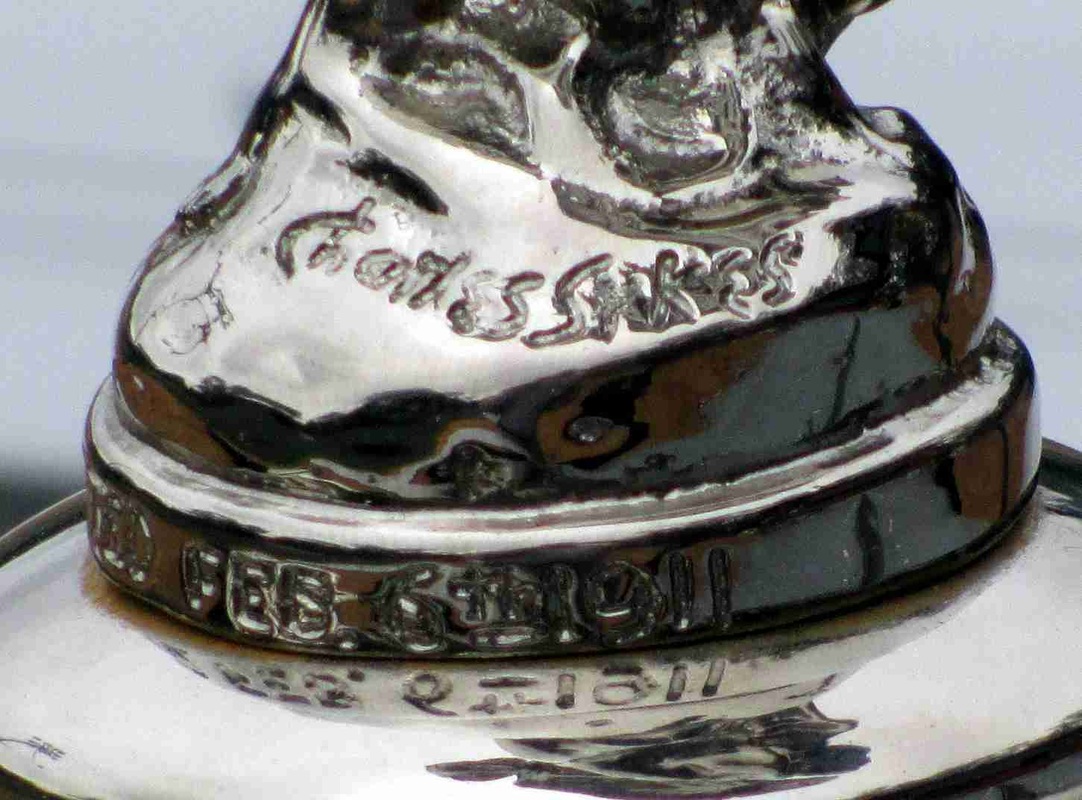
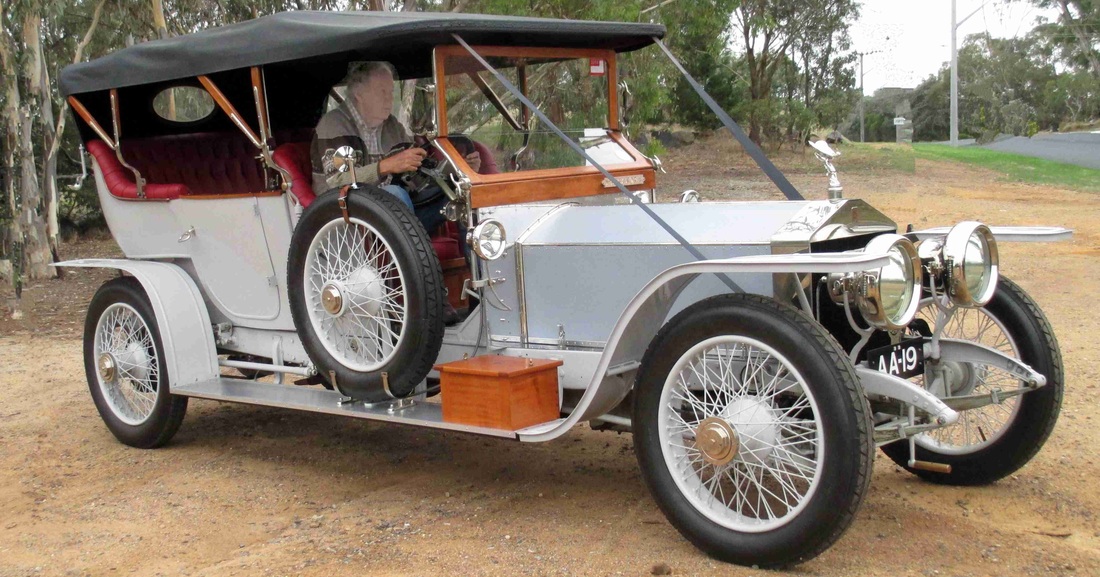
Ian Irwin first discovered the
remains of this very significant Rolls Royce (Chassis number 1404) in
south western NSW in 1975. At that time the car was 65 years and had
been dismembered with various parts used for a trailer and other
purposes.
The car, which has now been christened Eleanor in deference to her
amazing backstory, has been in Ian's possession and under restoration
since 1981 or thereabouts. He stopped documenting the cost decades ago
and such an exercise would have been pointless given the slump in the
spending power of the dollar since work first began.
In 1981 $7,500 would have bought you a new Ford Fairmont. Today you'd
need five times that.
It is also impossible to value this car due to its unique connection
with evolution of the Spirit of Ecstasy bonnet ornament.
I asked Ian for his driving impressions. This is his reply:
I have driven the car firstly in chassis form, and later with the
coachwork fitted on private property roads at Murrumbateman, and we are
pleased with every aspect we have tested to date. Silver Ghosts are
extremely powerful cars, and can drive all day at 45-50 mph (70 to
80km/h), and reach greater speeds to keep up with modern traffic. Few
veteran cars (i.e. pre-1919 cars) can match the road performance of the
Silver Ghosts. I don't think this 1404 will be any different to any
others, and yes, she is very stable on the road. I have driven a sister
car (1910 model chassis 1425) for 27 years, so I'm very familiar with
their performance capabilities. This car has still to be run in after a
major overhaul, so will be nursed for some time to come.
Silver Ghosts can handle being started in top gear with 5 passengers on
board.
I have been in touch with Lord Montagu consistently throughout the years
since I found the remains of the car in 1981, and he visited our
Canberra home in the 1980s, along with H.R.H. Prince Michael of Kent,
and they saw the car very much as it was when found. I have sent many
photographs over the years to Lord Montagu of the progress of the car's
restoration, including some this last week.
Lord Montagu has been back in touch and congratulated us on reaching
this milestone of being back on the road after 75 years of slumber.
Ian Irwin's comely ``Eleanor'' comes out
FAST FACTS
Rolls Royce 1404 (``Eleanor’’)
1910 40/50hp Rolls Royce (`Silver Ghost’ model)
Dimensions: Roughly 5.3 metres long, weighs 2 to 2.5 tonnes.
Mechanical: 7.4 litre in-line six cylinder with three-speed gearbox.
Restoration cost: Impossible to calculate, has been in progress for 33 years.
Value: Because of the car’s unique history it would be impossible to determine a true value without offering it for sale. ``Ordinary'' Ghosts are on the market in the UK for prices ranging from $180,000 to $700,000 and upwards.
By David Ellery
The most romantic Rolls Royce ever made is to be unveiled after a 33-year-long restoration at Wheels on March 16.
``Eleanor’’, a lifelong labour of love for retired ACT school teacher, Ian Irwin, is the Silver Ghost delivered to Lord Montagu of Beaulieu in December 1910.
She will take pride of place in an unprecedented display of up to 25 of the iconic cars in Kings Park as part of the ACT’s largest annual gathering of rare and classic cars, Wheels, from 9.30am on Sunday (March 16).
Mr Irwin, now 75, has devoted more than half his life to breathing life back into the car at the heart of the romantic, and ultimately tragic, story behind the famous Rolls Royce ``Spirit of Ecstasy’’ bonnet ornament.
The car’s first owner Lord Montagu (aka John Walter Edward Douglas Scott-Montagu, the second Baron of Beaulieu) was truly, madly and deeply in love with his secretary, Eleanor Velasco Thornton. They could not wed as she had no title or money.
Although Lord Montagu eventually tied the knot (twice!) he never relinquished his first love. When Rolls Royce chassis number 1404 was delivered to his home with fashionable Roi des Belges coachwork by Barker and Co of London he commissioned a personalised hood ornament from the sculptor, Charles Sykes.
Sykes looked no further for his inspiration than the comely Eleanor. He immortalised her in diaphanous robes and with a finger to her lips, an obscure reference to the secret love affair. The piece was called ``Whisper’’.
When, a short time later, Rolls Royce’s managing director, Claude Johnson, commissioned Sykes to create an ornament that would grace all Rolls Royces from that point forward Eleanor was conscripted to the service of art and science a second time.
This time the figure was leaning forward, arms behind her and trailing draperies not dissimilar to an angel’s wings. Sykes described his creation as ``the spirit of ecstasy, who has selected road travel as her supreme delight’’.
Johnson, a close friend of Lord Montagu who had opened the new Rolls Royce factory when the company moved to Derby in 1908, was the man responsible for the company’s slogan ``the best car in the world’’.
He worked with Lord Montagu on the fitting of what is claimed to be the world’s first harmonic balancer, the balanced flywheel that stops crankshafts and pistons from tearing engines to pieces, to 1404 and the pair spent a month in France testing it.
Mr Irwin is happy to point out the holes in the chassis where the suspension components were moved forward more than 100 years ago to make room for this work.
And the love story? It ended quite badly. Eleanor died on the night of December 30, 1915, when the SS Persia was torpedoed by a German U-Boat near Crete on her way to India. Lord Montagu, who was also aboard, survived the attack and died in 1929.
His son, the third Baron of Beaulieu, was just three at the time. He was keenly aware of the second Baron’s contribution to motoring and founded the world famous National Motor Museum on the family estate, which dates back to the dissolution of the monasteries under Henry XVIII in 1538, to preserve his legacy.
Lord Montagu has been aware of the restoration project for some time and this week congratulated Mr Irwin on his efforts.
``I am delighted to see my father’s car restored to its former glory,’’ he said. ``That the car bears the Spirit of Ecstasy which was modelled on my father’s lover, Eleanor Thornton, makes it all the more poignant.’’
A motoring pioneer with an interest in the new and the novel, the second Baron of Beaulieu (pronounced Bewley) had neither the inclination or the need to keep any vehicle for long.
Rolls Royce 1404, formally named ``Eleanor’’ by Mr Irwin a few years ago, quickly passed out of his hands.
She had five owners in just 11 years between 1910 and 1921 and turned up in Melbourne in the possession of a James R. Hartley in 1923.
Increasingly out of fashion and, as she aged, ever more costly and difficult to maintain, Eleanor fell upon hard times in the 1930s.
By 1938 she was on the market for 100 pounds at Great Southern Motors in Wagga, having been traded in on a new Ford V8.
Eleanor’s next owner, the equivalent of a postwar hot rodder, intended to install the Rolls Royce mechanicals in a Packard chassis - an exercise that would have destroyed her forever.
The war, fortunately in this case, intervened and Mr Irwin became aware of the car in 1975. It took him until 1981 to secure the major components from various points around south western NSW and, since then, has scoured the globe for the parts needed to complete the project.
His greatest coup was sourcing a Barker and Co Roi des Belges body that had originally been fitted to a 1908 car.
``The body on this car is original to the period; it is not something that has been recreated,’’ he said.
(An edited version of this article was originally published in The Canberra Times).
Rolls Royce 1404 (``Eleanor’’)
1910 40/50hp Rolls Royce (`Silver Ghost’ model)
Dimensions: Roughly 5.3 metres long, weighs 2 to 2.5 tonnes.
Mechanical: 7.4 litre in-line six cylinder with three-speed gearbox.
Restoration cost: Impossible to calculate, has been in progress for 33 years.
Value: Because of the car’s unique history it would be impossible to determine a true value without offering it for sale. ``Ordinary'' Ghosts are on the market in the UK for prices ranging from $180,000 to $700,000 and upwards.
By David Ellery
The most romantic Rolls Royce ever made is to be unveiled after a 33-year-long restoration at Wheels on March 16.
``Eleanor’’, a lifelong labour of love for retired ACT school teacher, Ian Irwin, is the Silver Ghost delivered to Lord Montagu of Beaulieu in December 1910.
She will take pride of place in an unprecedented display of up to 25 of the iconic cars in Kings Park as part of the ACT’s largest annual gathering of rare and classic cars, Wheels, from 9.30am on Sunday (March 16).
Mr Irwin, now 75, has devoted more than half his life to breathing life back into the car at the heart of the romantic, and ultimately tragic, story behind the famous Rolls Royce ``Spirit of Ecstasy’’ bonnet ornament.
The car’s first owner Lord Montagu (aka John Walter Edward Douglas Scott-Montagu, the second Baron of Beaulieu) was truly, madly and deeply in love with his secretary, Eleanor Velasco Thornton. They could not wed as she had no title or money.
Although Lord Montagu eventually tied the knot (twice!) he never relinquished his first love. When Rolls Royce chassis number 1404 was delivered to his home with fashionable Roi des Belges coachwork by Barker and Co of London he commissioned a personalised hood ornament from the sculptor, Charles Sykes.
Sykes looked no further for his inspiration than the comely Eleanor. He immortalised her in diaphanous robes and with a finger to her lips, an obscure reference to the secret love affair. The piece was called ``Whisper’’.
When, a short time later, Rolls Royce’s managing director, Claude Johnson, commissioned Sykes to create an ornament that would grace all Rolls Royces from that point forward Eleanor was conscripted to the service of art and science a second time.
This time the figure was leaning forward, arms behind her and trailing draperies not dissimilar to an angel’s wings. Sykes described his creation as ``the spirit of ecstasy, who has selected road travel as her supreme delight’’.
Johnson, a close friend of Lord Montagu who had opened the new Rolls Royce factory when the company moved to Derby in 1908, was the man responsible for the company’s slogan ``the best car in the world’’.
He worked with Lord Montagu on the fitting of what is claimed to be the world’s first harmonic balancer, the balanced flywheel that stops crankshafts and pistons from tearing engines to pieces, to 1404 and the pair spent a month in France testing it.
Mr Irwin is happy to point out the holes in the chassis where the suspension components were moved forward more than 100 years ago to make room for this work.
And the love story? It ended quite badly. Eleanor died on the night of December 30, 1915, when the SS Persia was torpedoed by a German U-Boat near Crete on her way to India. Lord Montagu, who was also aboard, survived the attack and died in 1929.
His son, the third Baron of Beaulieu, was just three at the time. He was keenly aware of the second Baron’s contribution to motoring and founded the world famous National Motor Museum on the family estate, which dates back to the dissolution of the monasteries under Henry XVIII in 1538, to preserve his legacy.
Lord Montagu has been aware of the restoration project for some time and this week congratulated Mr Irwin on his efforts.
``I am delighted to see my father’s car restored to its former glory,’’ he said. ``That the car bears the Spirit of Ecstasy which was modelled on my father’s lover, Eleanor Thornton, makes it all the more poignant.’’
A motoring pioneer with an interest in the new and the novel, the second Baron of Beaulieu (pronounced Bewley) had neither the inclination or the need to keep any vehicle for long.
Rolls Royce 1404, formally named ``Eleanor’’ by Mr Irwin a few years ago, quickly passed out of his hands.
She had five owners in just 11 years between 1910 and 1921 and turned up in Melbourne in the possession of a James R. Hartley in 1923.
Increasingly out of fashion and, as she aged, ever more costly and difficult to maintain, Eleanor fell upon hard times in the 1930s.
By 1938 she was on the market for 100 pounds at Great Southern Motors in Wagga, having been traded in on a new Ford V8.
Eleanor’s next owner, the equivalent of a postwar hot rodder, intended to install the Rolls Royce mechanicals in a Packard chassis - an exercise that would have destroyed her forever.
The war, fortunately in this case, intervened and Mr Irwin became aware of the car in 1975. It took him until 1981 to secure the major components from various points around south western NSW and, since then, has scoured the globe for the parts needed to complete the project.
His greatest coup was sourcing a Barker and Co Roi des Belges body that had originally been fitted to a 1908 car.
``The body on this car is original to the period; it is not something that has been recreated,’’ he said.
(An edited version of this article was originally published in The Canberra Times).
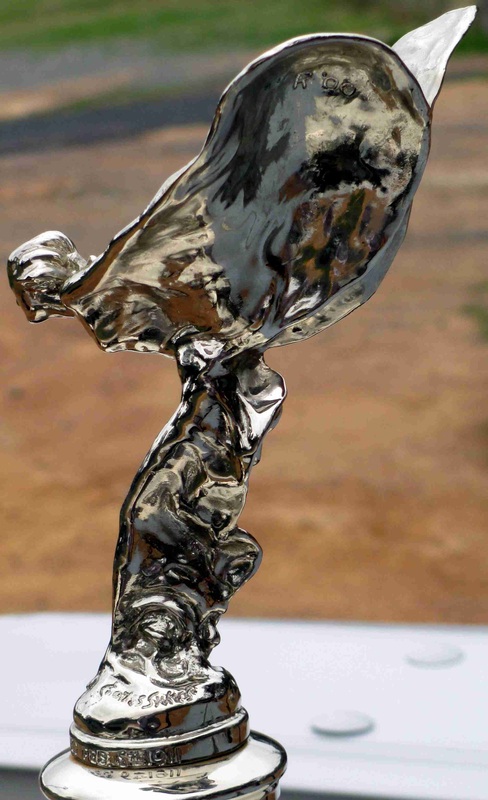
The Spirit of Ecstasy that is currently fitted to the car.
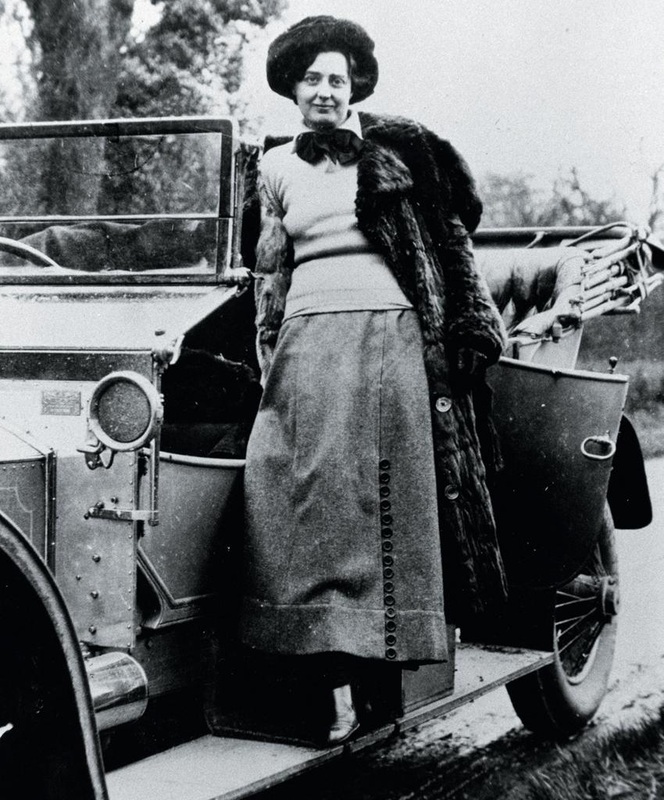
Eleanor Thornton in more modest attire.
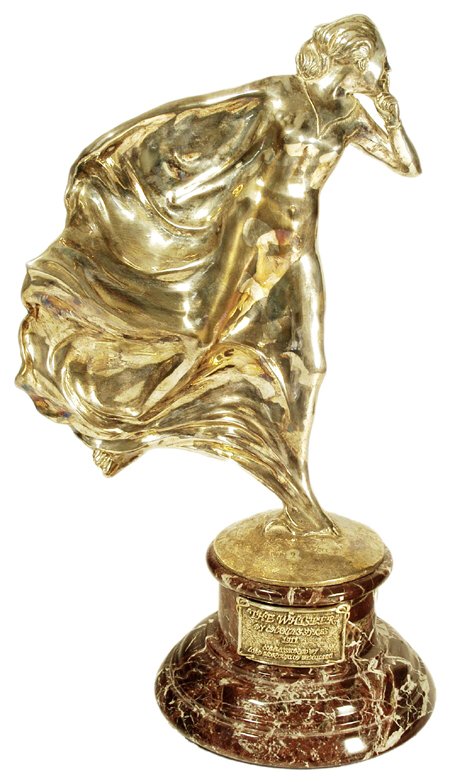
``Whisper'', the sculpture originally created by Sykes.
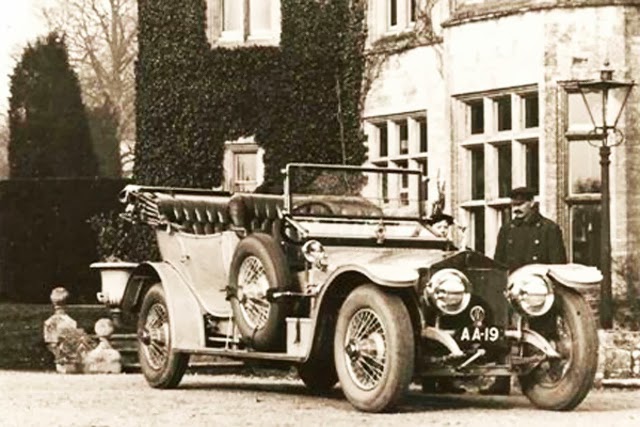
This photo was taken at Montagu's English estate which dates back to the dissolution of the monasteries under Henry VIII.
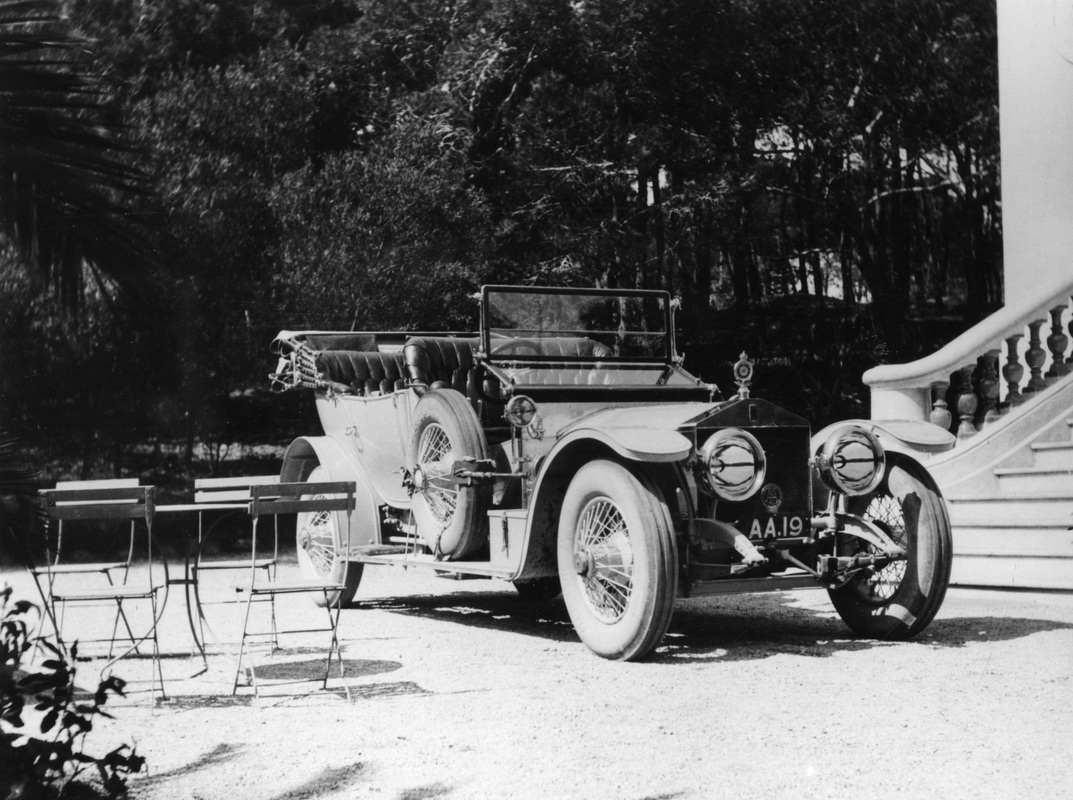
This picture of the car was taken in the south of France.
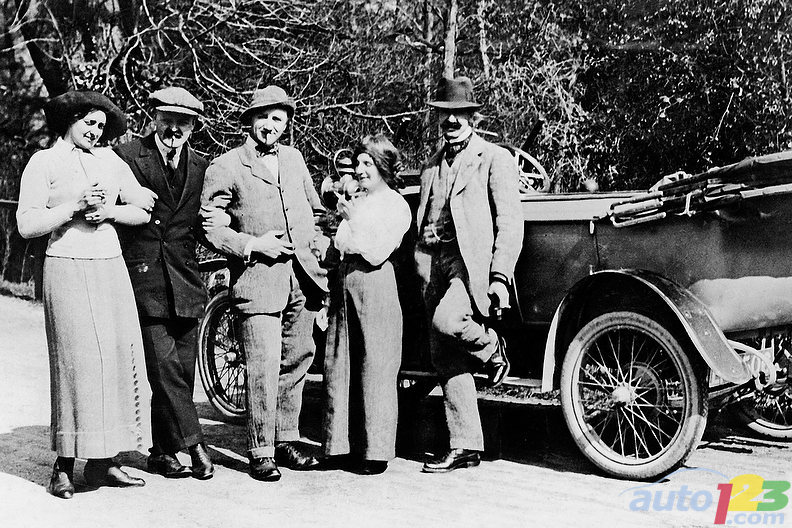
Eleanor and Sykes (far left) arm in arm.
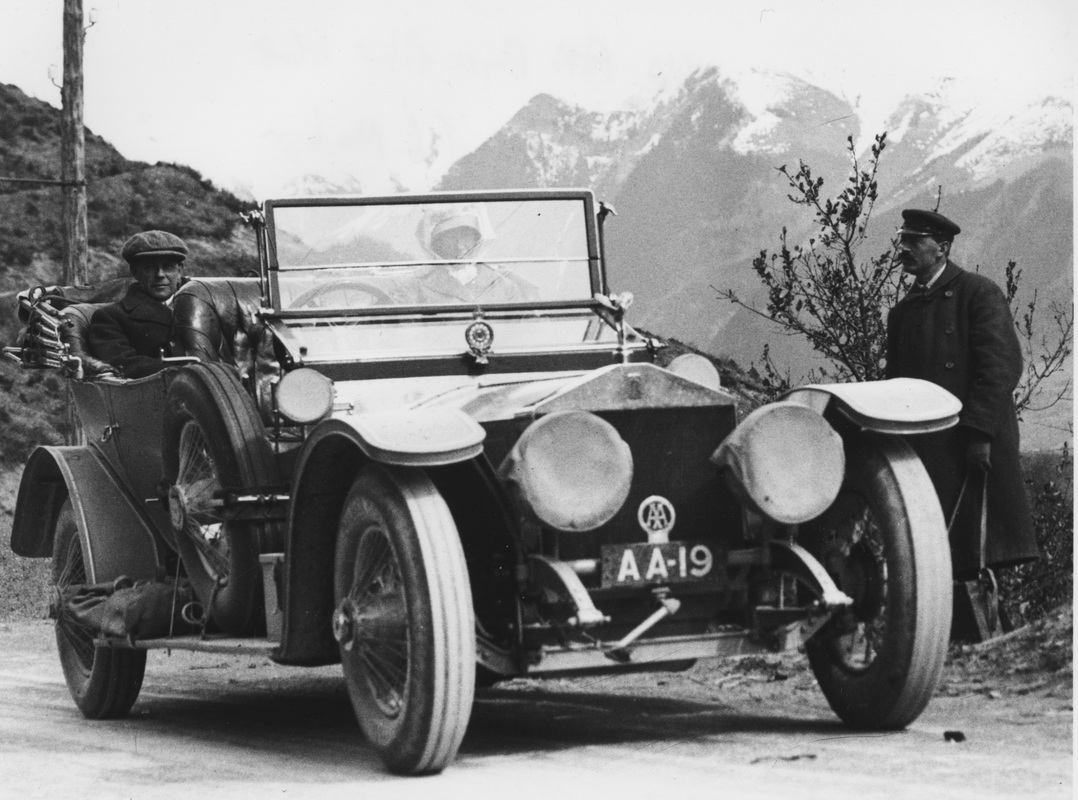
This picture was taken in the
Alps. Note the headlamp protectors. Montagu, left, Eleanor and their
driver must have been hardy types. The hood is down. The bonnet mascot
appears to be a conventional Spirit of Ecstasy by this point.
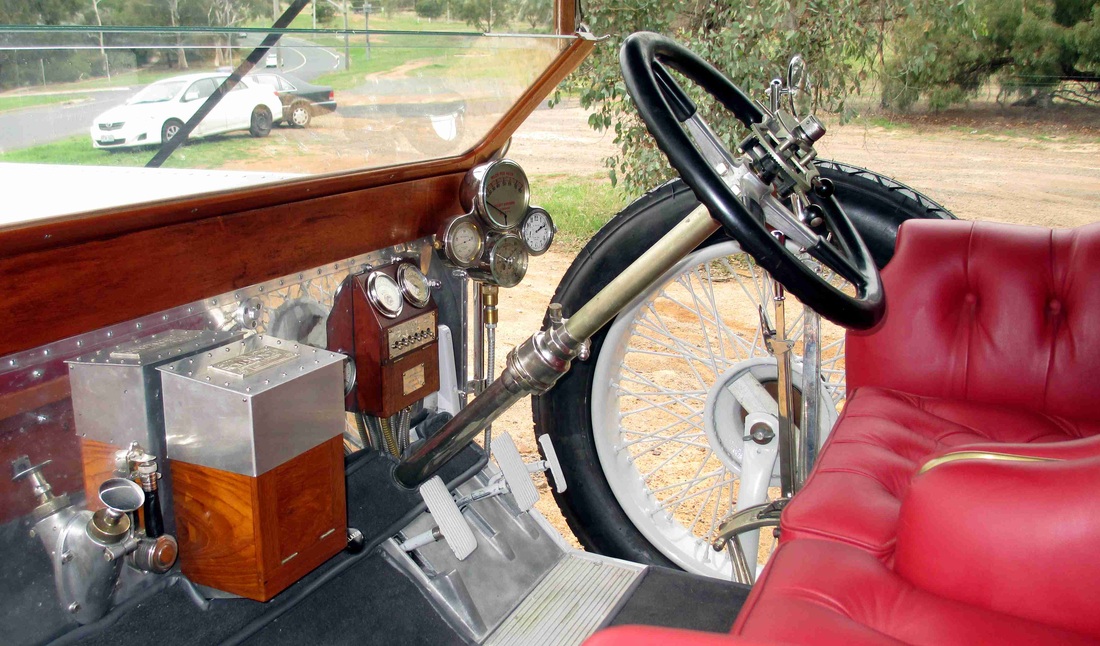
The interior is a lovely place.
Immaculate leather, gorgeous period instruments and lots and lots of
wood. The driver has to climb in through the passenger's seat because of
the position of the spare wheel.
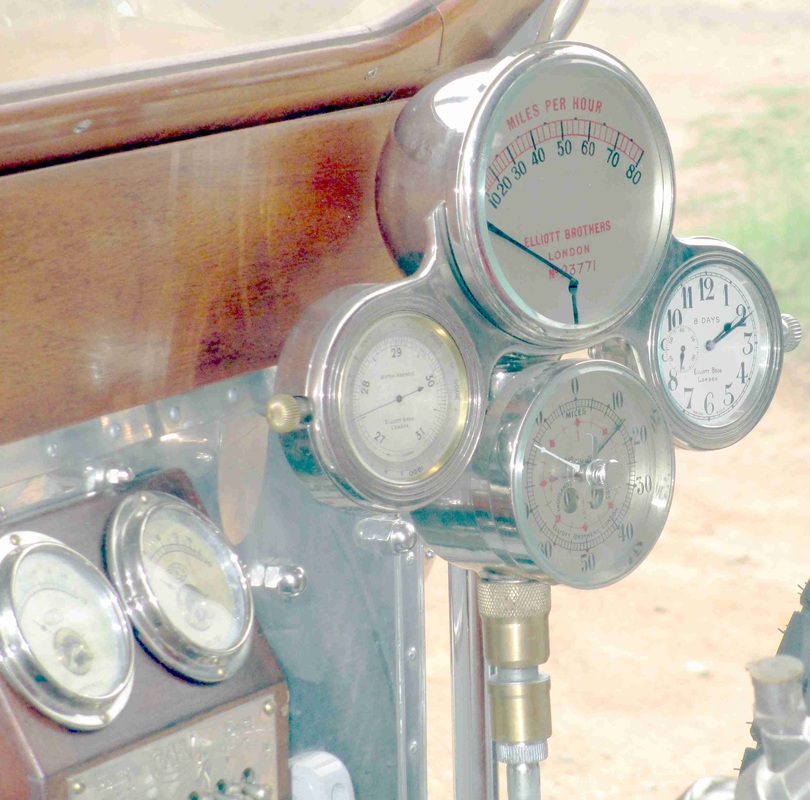
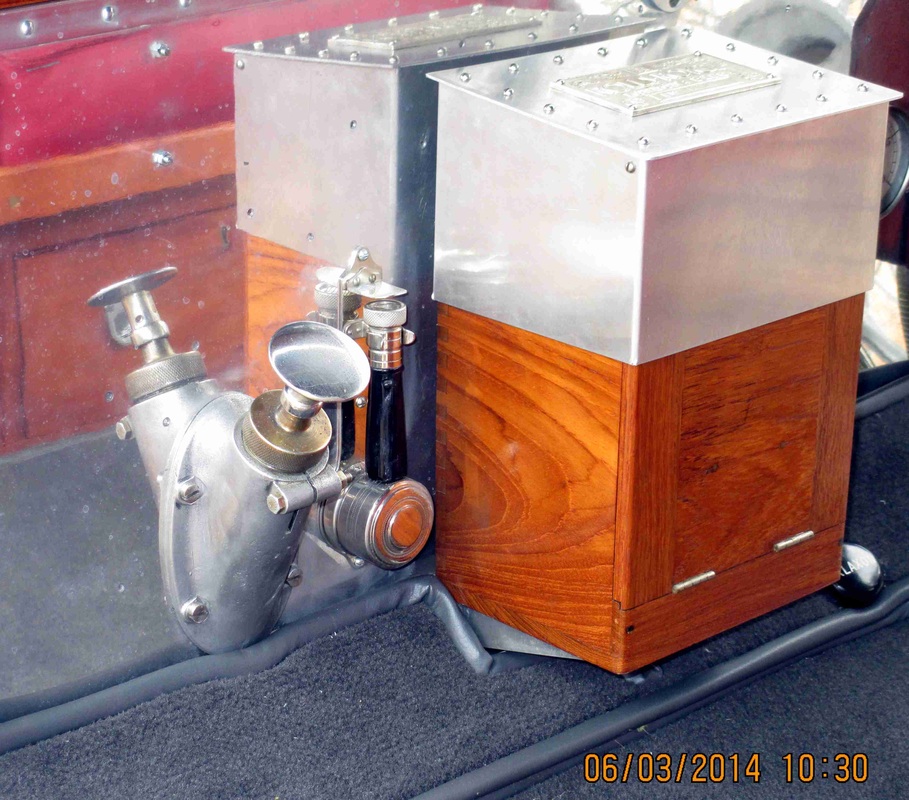
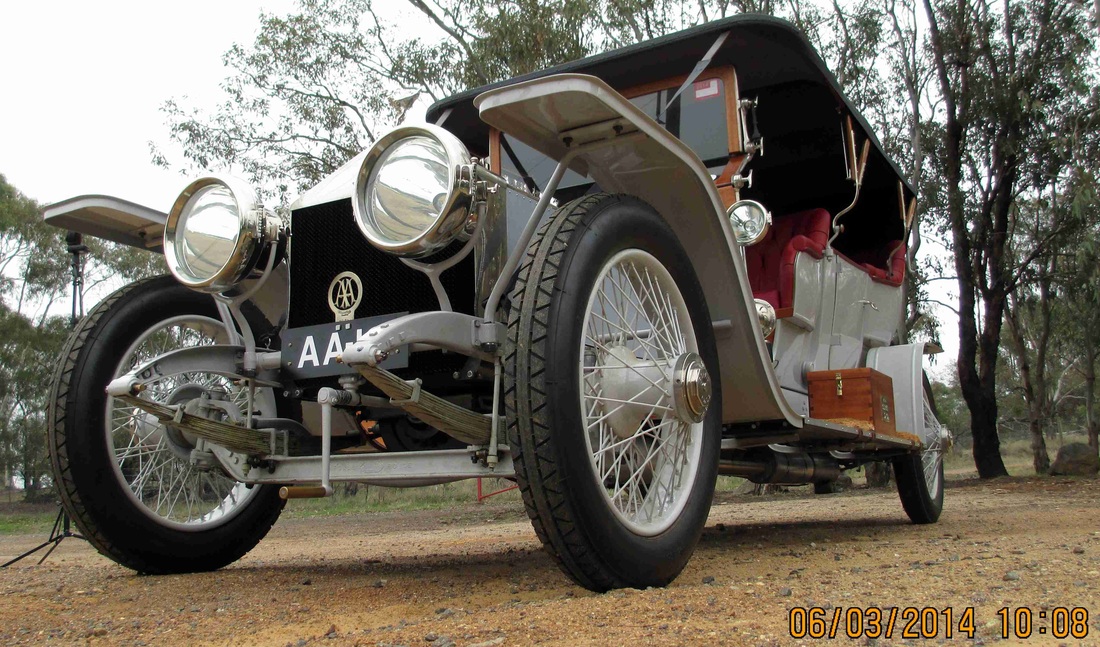
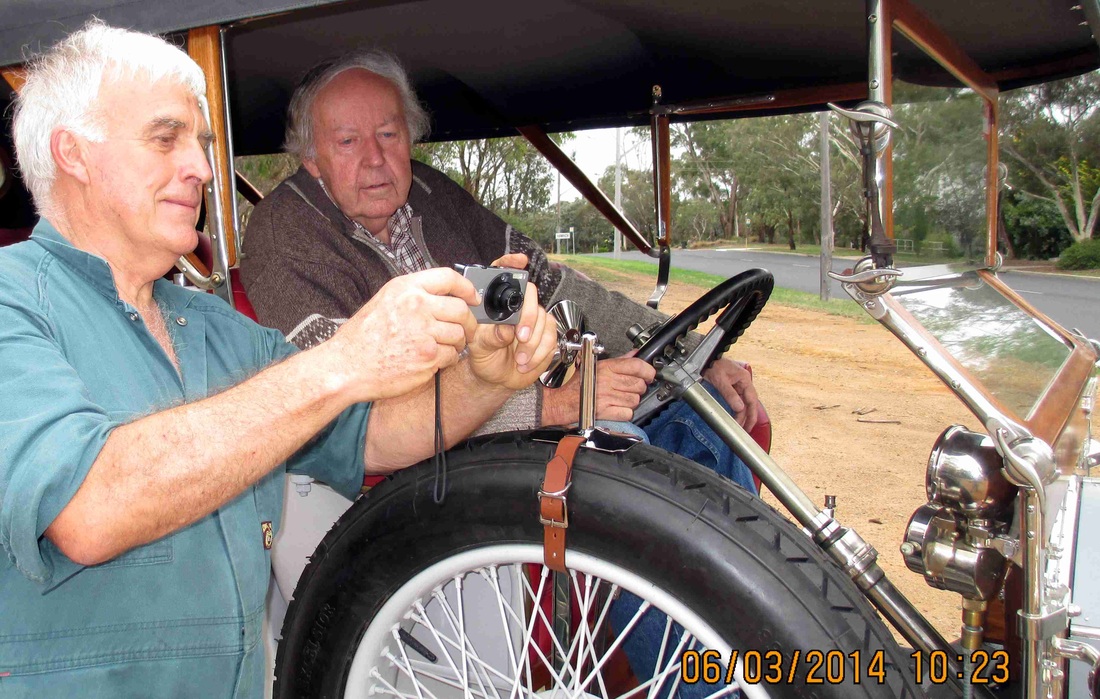
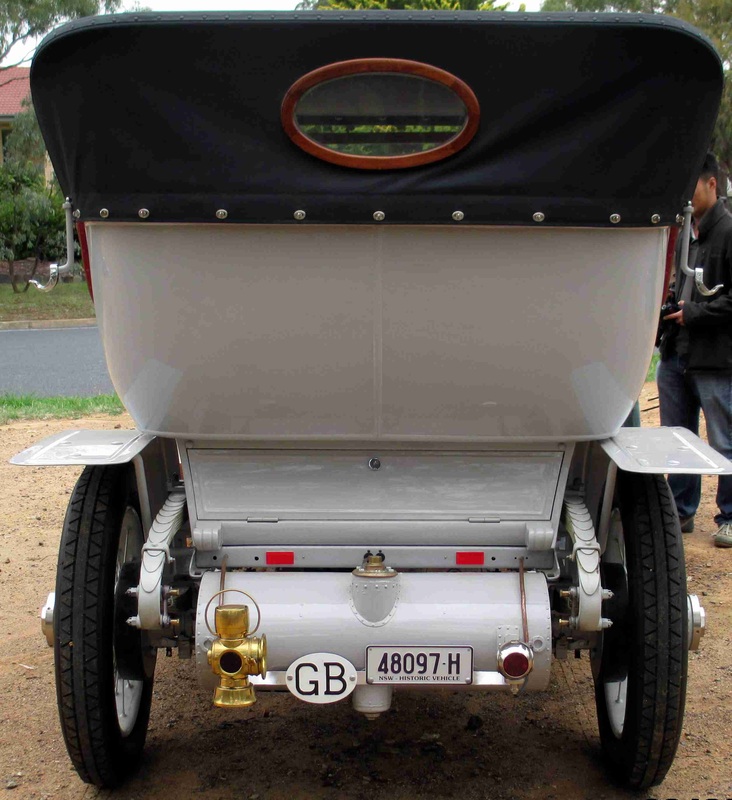
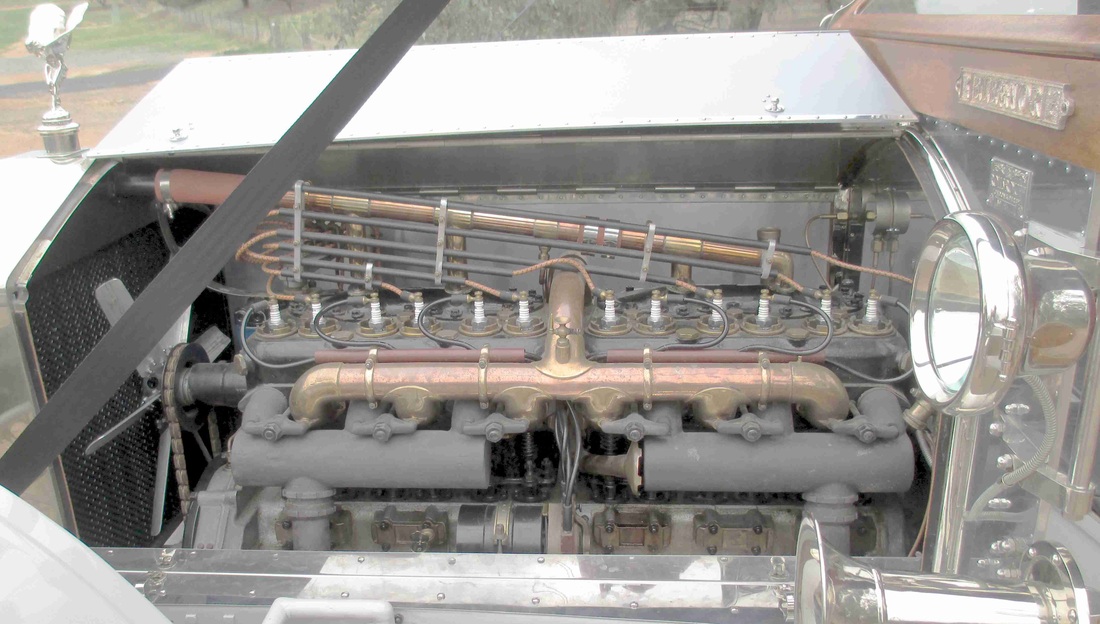
The engine is made of three
blocks of two cylinders each. The head is not detachable for serving in
the modern manner. One plus of this arrangement is that there is no head
gasket. The low pressure cooling system means the radiator boils at a
fraction over 100 degrees Celsius. Ghost motors were very durable and,
once set up, ran for years (and in many cases decades) with a minimum of
fuss and attention. The model proved itself in the desert in WWI when
it saw service with Lawrence of Arabia.
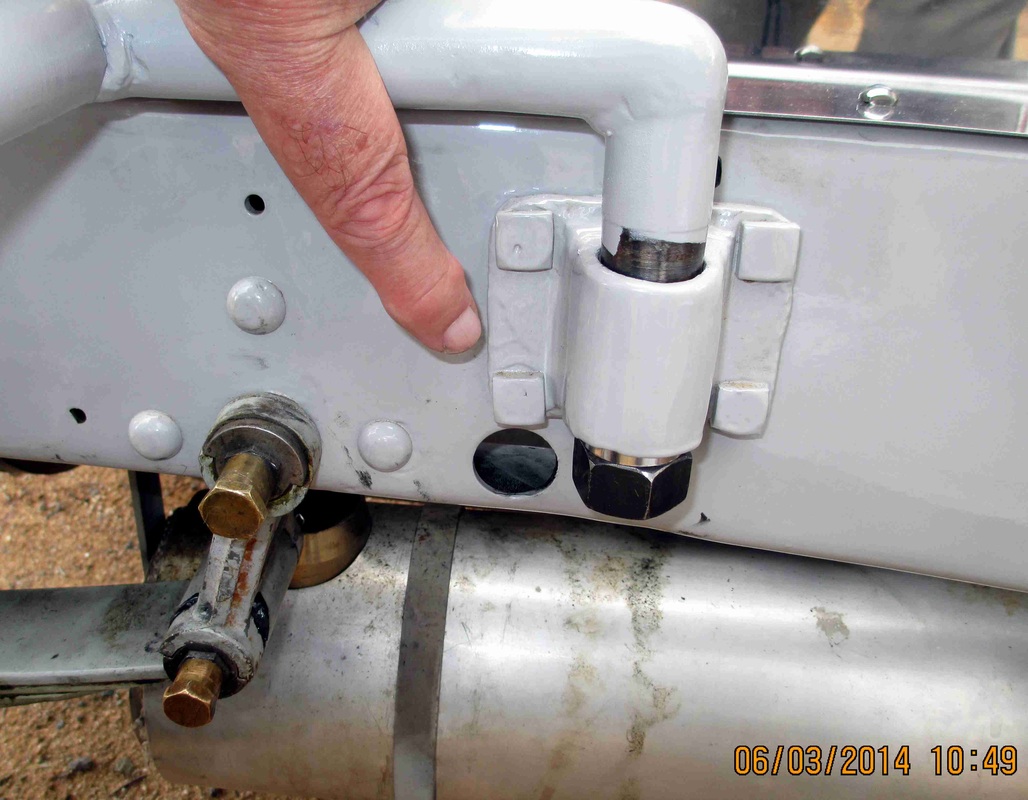
The original holes for the front suspension which was moved forwards to accommodate the harmonic balancer - a world first.
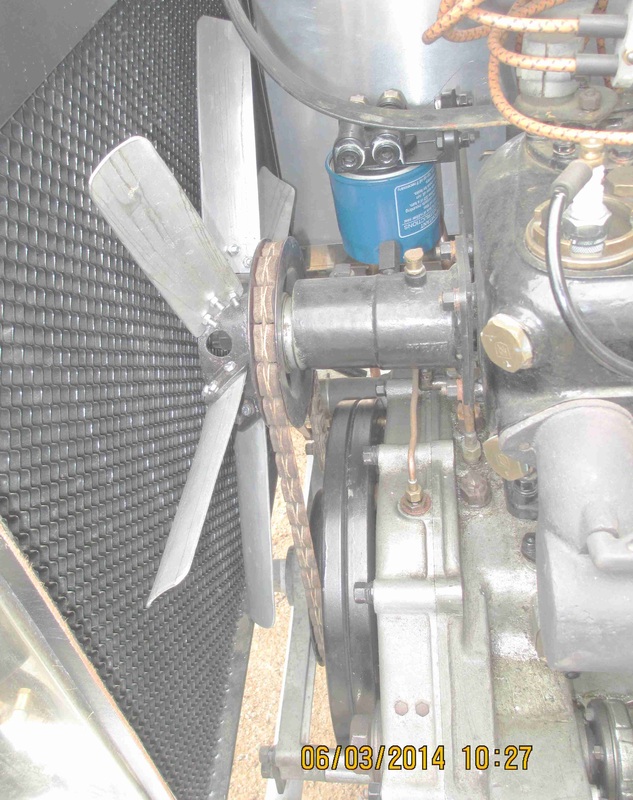
Horse hair is used in the amazing fan belt.
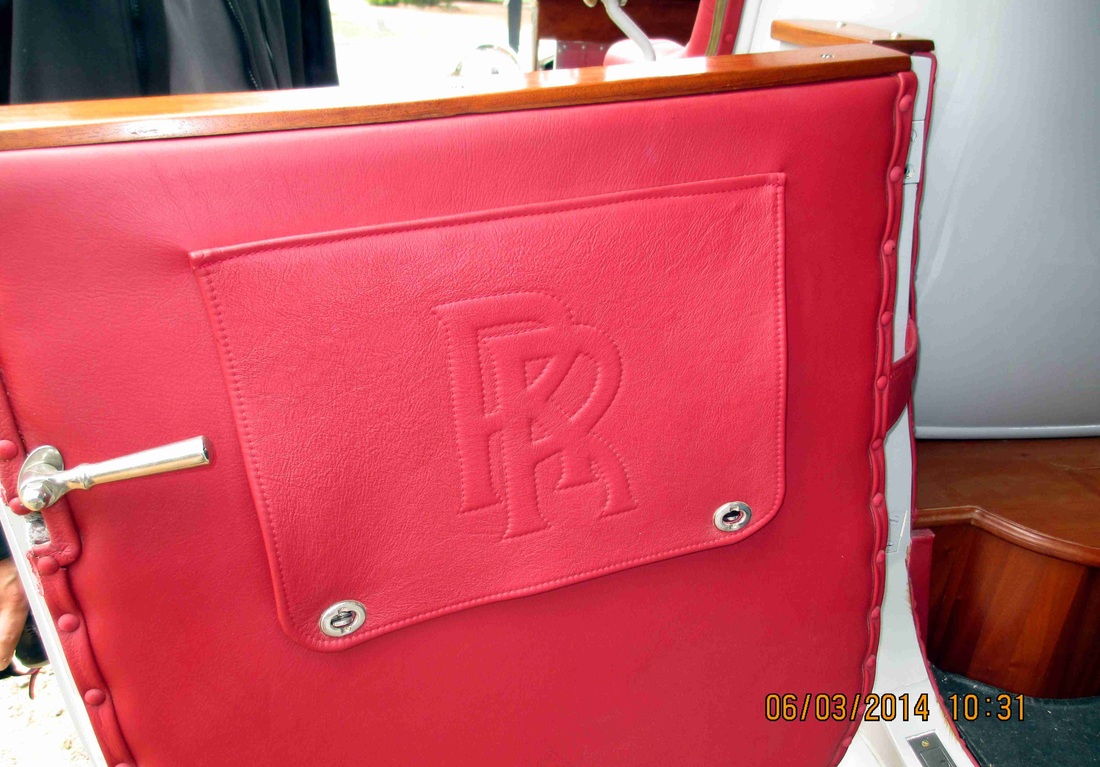
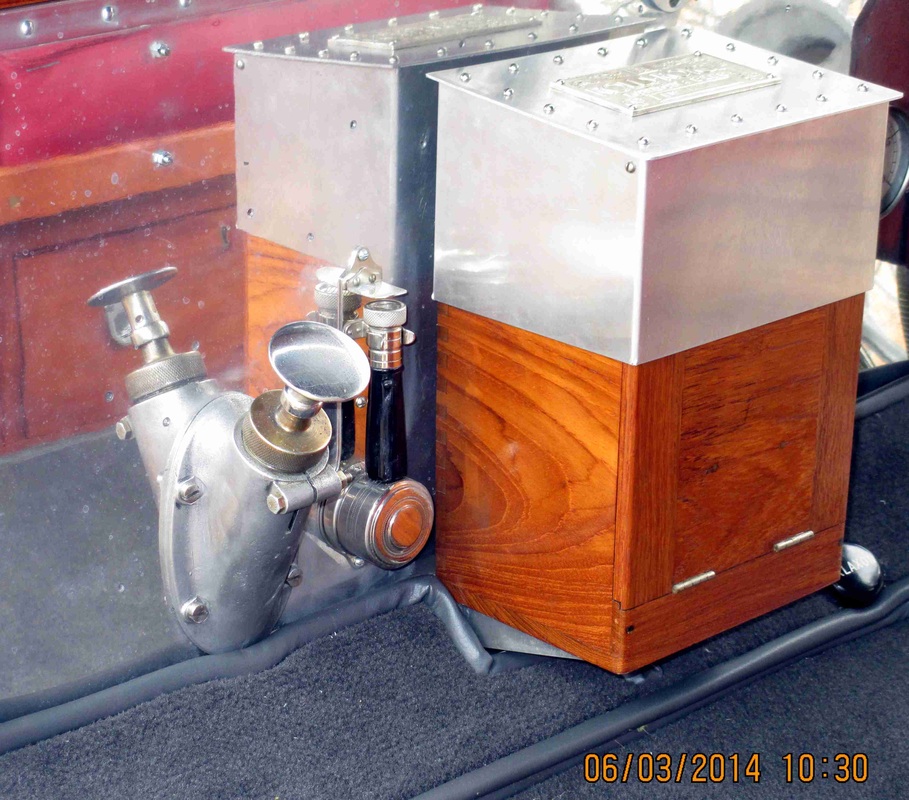
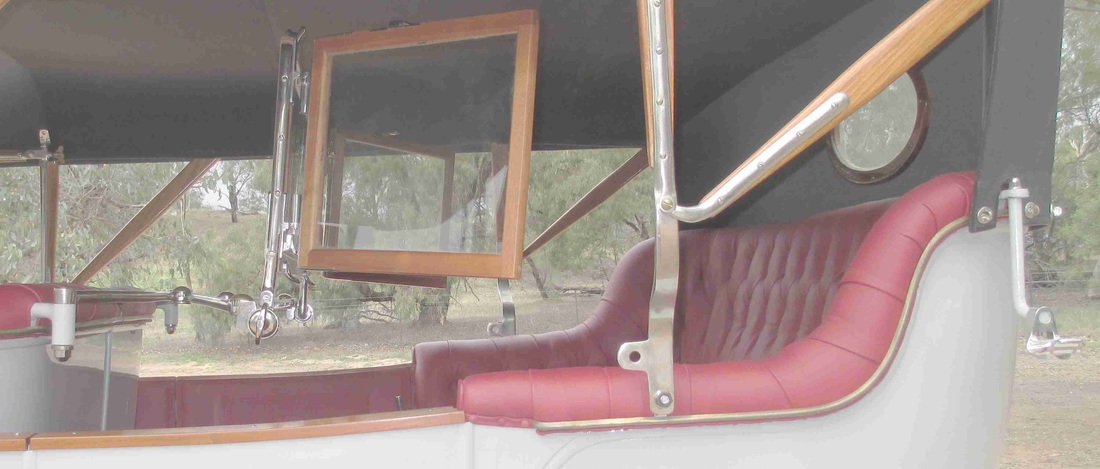
This amazing screen protects the rear seat passengers when the hood is down. It can also double as a picnic table.
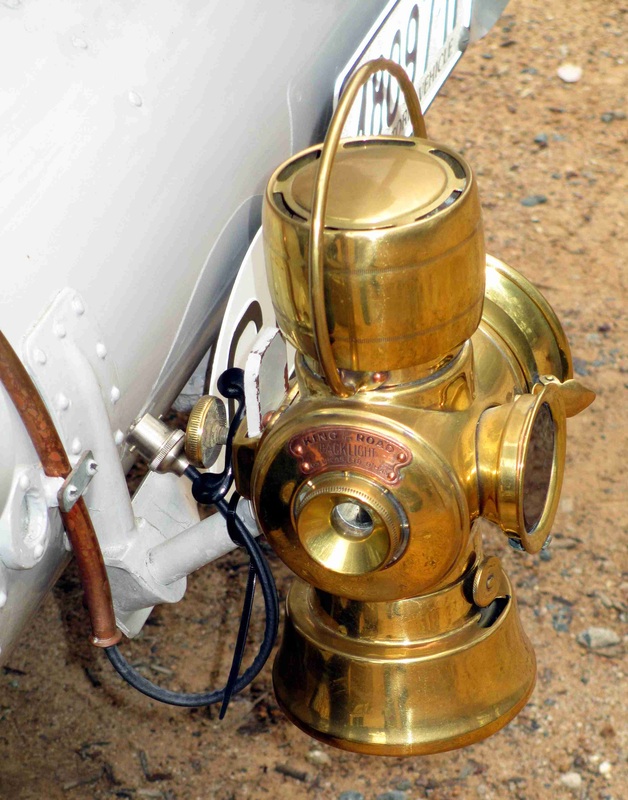
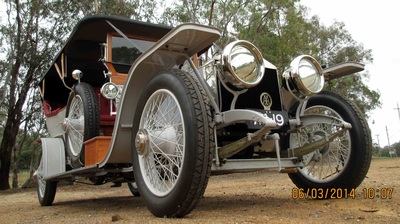
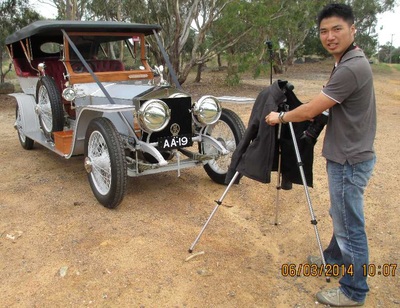
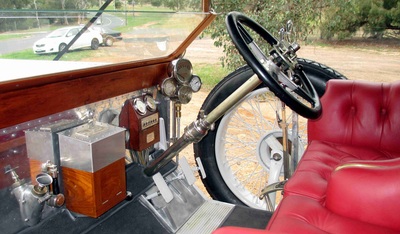
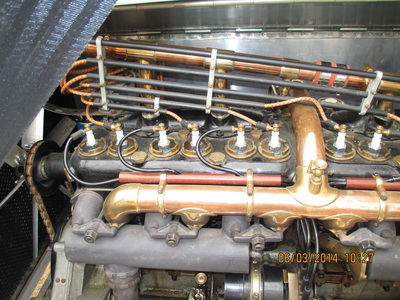
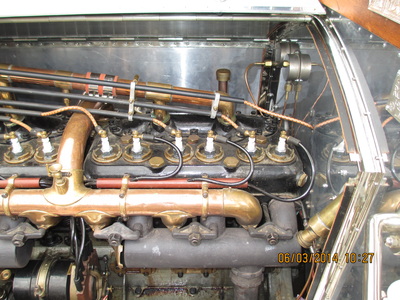
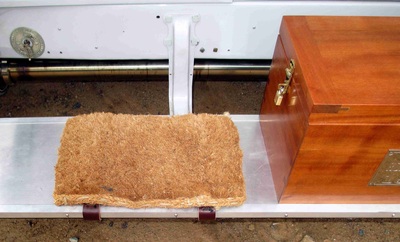

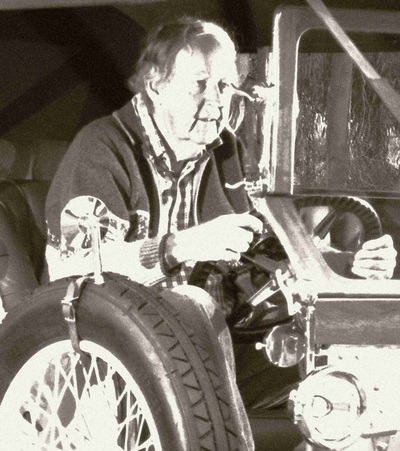

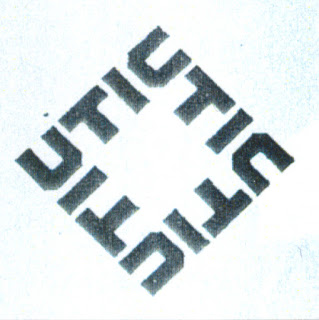

Comentários
Postar um comentário